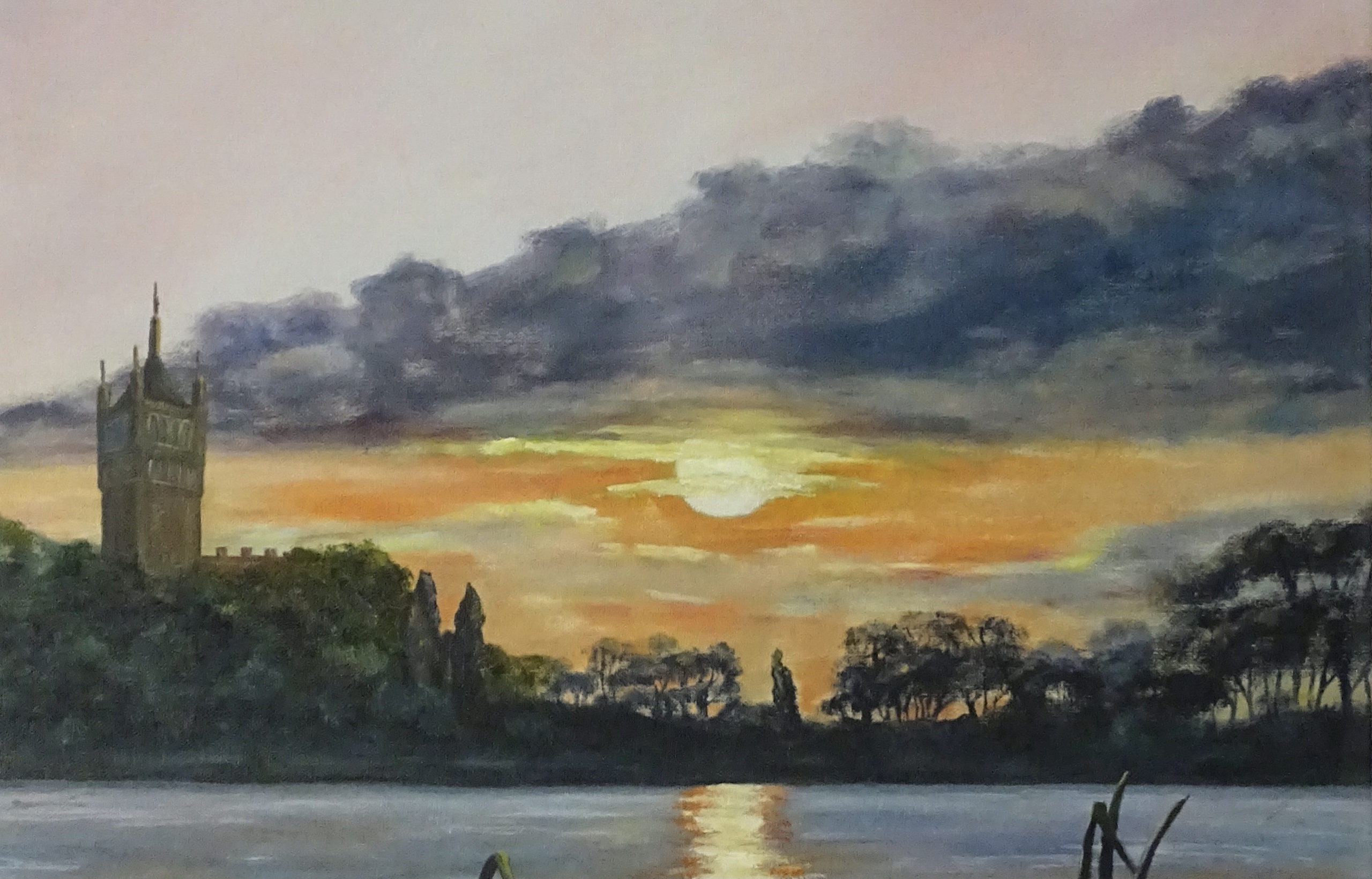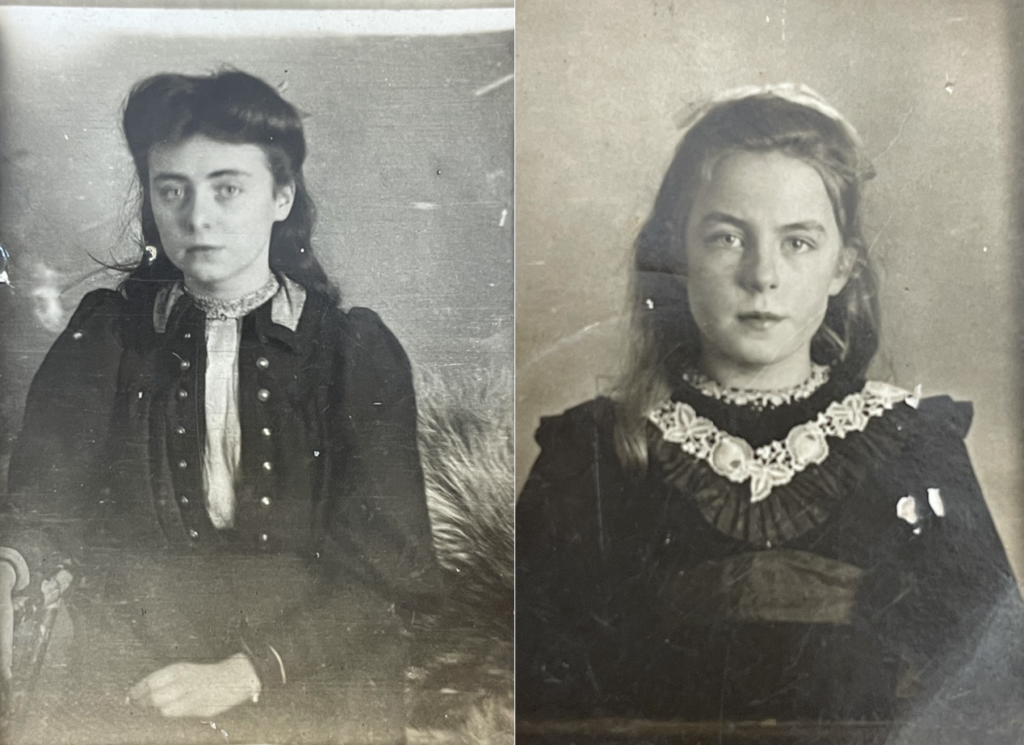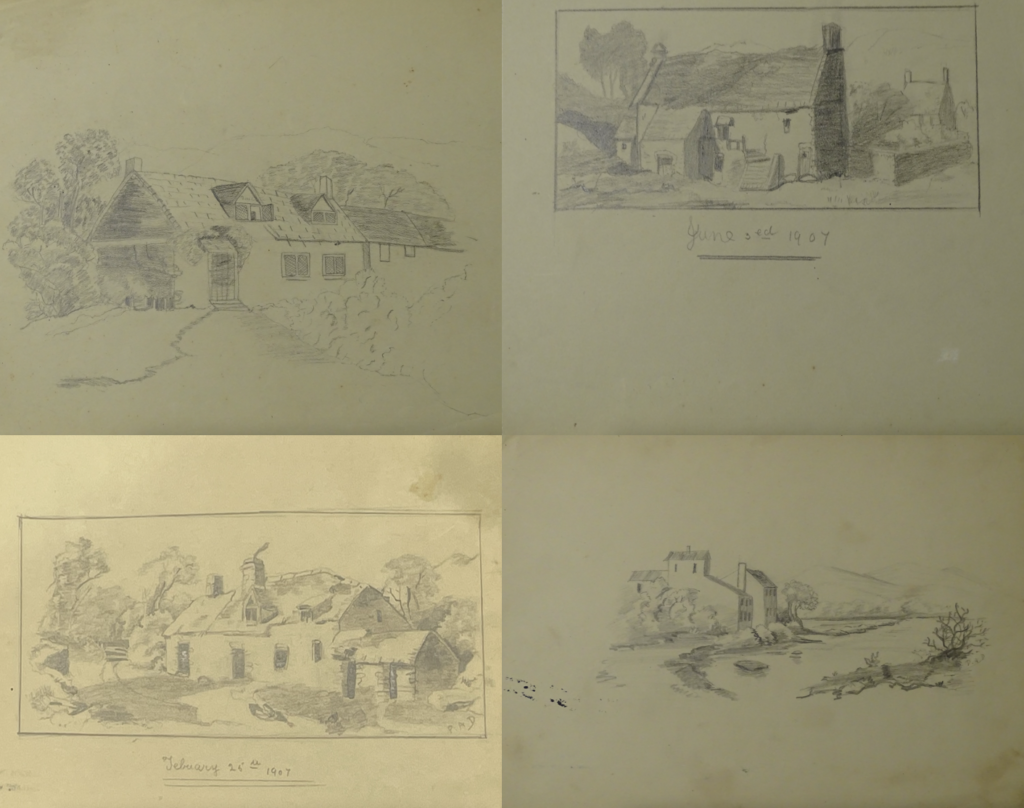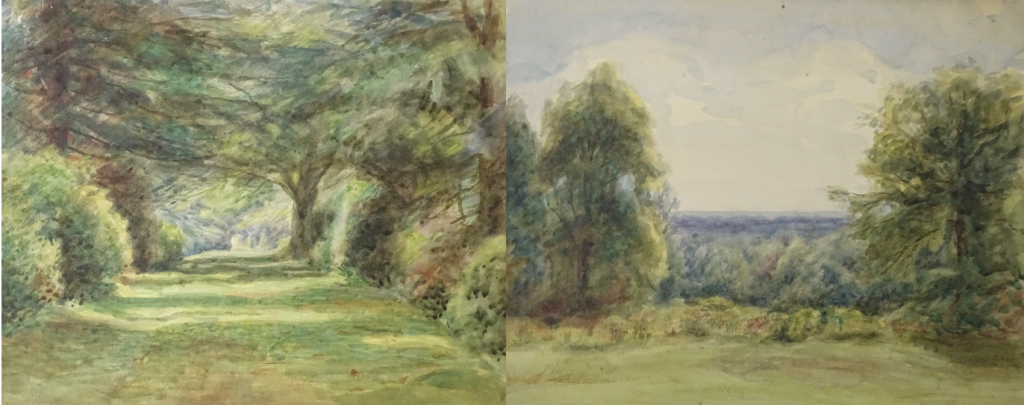Picturing Egham – Part 2
Read Part 1 here.
The journey through the Egham Museum’s art collection continues into the beginning of the twentieth century. In this section, we delve into the artistic practices of two sisters whose lives spanned from the beginning of the 20th century to the post-war period.

Art and Life
Already known for its landscapes and historical landmarks, Egham achieved a new level of public recognition in 1886, when Royal Holloway College was founded. In addition to its relevance for women’s education, given its status as one of the first women’s colleges in the country, the college also became a local centre for art collection.
Thomas Holloway (1800-1883), founder of the college and of the Holloway Sanatorium, began building an art collection for the college when his brother-in-law visited Vassar College in New York State – the most important college for women at the time – and was impressed with their art collection. This prompted Holloway to do the same, and so in 1881 he began forming a collection specifically for the College’s students. In addition to access to this on-site art collection, the College also offered extracurricular art classes to students, thereby further promoting artistic practices to the students’ and to the local community.
The Dallen Family
The Dallens have featured in several of our blog and social media posts. As such an important family for the local community, the Dallen family left us an intriguing collection of personal items which continue to fascinate us.
The parents, Henry and Charlotte, ran Englefield’s Green bakery after they moved to the area in the 1890s, while their daughters Phyllis (1897-1964) and Margery (1901-1981) helped at the bakery’s shop. This bakery was a crucial business for the local residents, as many of their baked goods were sourced from there. The sisters continued to manage the bakery until the mid-twentieth century.
In addition to assisting their parents at the bakery, Phyllis and Margery were also very involved in artistic activities through practising music, collecting postcards, and producing artworks. The sisters’ interest in art is not only revealed through the artworks they produced, as some of the postcards in Phyllis’ collection reveal an interest in 18th and 19th-century art.
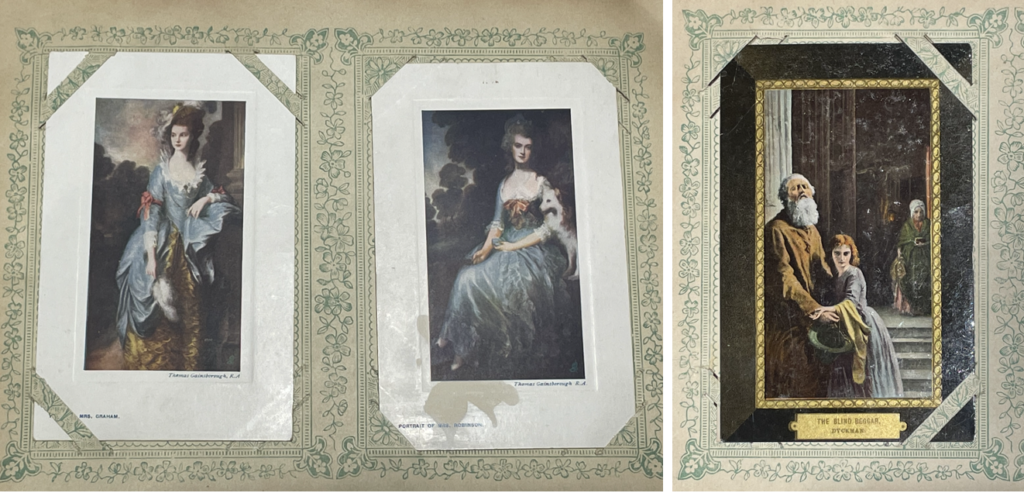
Credit: Egham Museum P2034
In this blogpost, we explore how Phyllis’ postcard collection sheds light into how it was like to be an Edwardian teenager. Throughout this section, we explore what it was like to be a local artist inspired by local Edwardian scenes.
Artistic Partnership
The first glimpse we have into the sisters’ artistic achievements are pencil drawings of cottages by Phyllis. These were completed in 1907, when she was 10 years old. Despite her young age, these drawings already demonstrate Phyllis’ abilities as an artist, with careful attention to details, shapes, and shading.
Although these cottages are not identified, it is likely they were local to the Dallen family. As we explore in this section, Phyllis and Margery’s inspiration was drawn from local scenes, as they turned real-life objects, buildings, and people into art.
This inspiration is reflected in the sketchbooks left by the sisters. While demonstrating how elements around them contributed to their art, these sketchbooks also reveal the sisters’ interest in advancing their drawing and painting skills.
Perhaps inspired by her sister’s artistic endeavours, Margery’s first drawing book dates to 1908, when she was 8 years old. In 1910, Phyllis joined her sister in practising shapes and forms in a sketchbook, and by 1914 both Phyllis and Margery – then 17 and 14, respectively – demonstrated great aptitude for art.
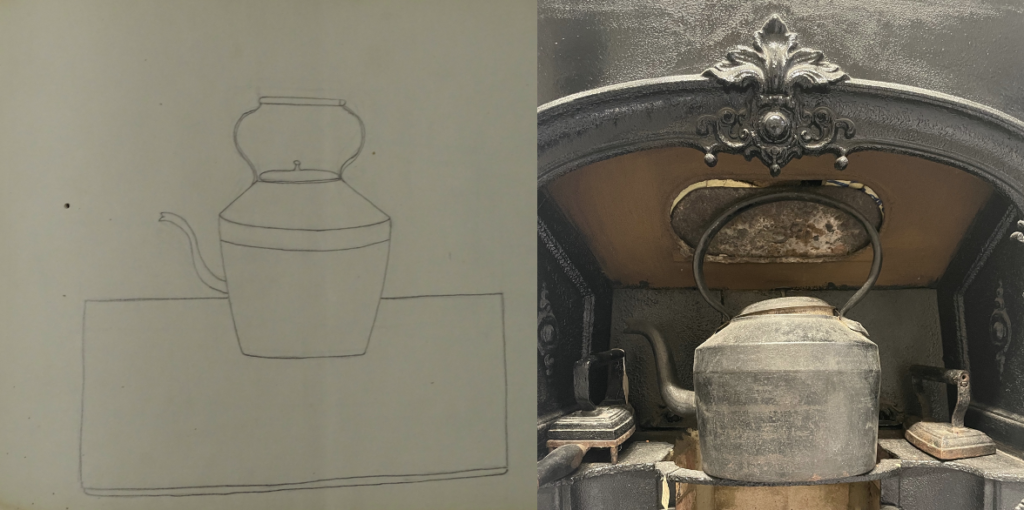

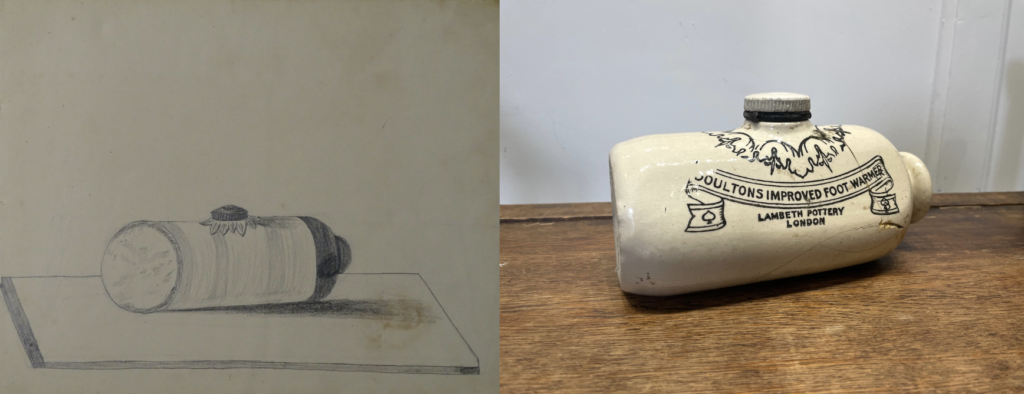
Their tendency to draw items related to the bakery emphasises the importance of this place in their lives. More than their parents’ – and, as teenagers and adults, their own – workplace, this is the place where they grew up.
By eternalising these items in the sketchbooks, Phyllis and Margery are registering not only the place which saw them grew up together, but also the elements which informed their understanding of artistic practices. Practising artistic forms and shapes through these details helped them to advance their skills, and prepared them for the skillful watercolours they would paint later in life.
But their drawings are not only depictions of items at the bakery. Browsing the sketchbooks and Phyllis’ postcard album side by side shows us that the sisters might have taken inspiration from the postcards.
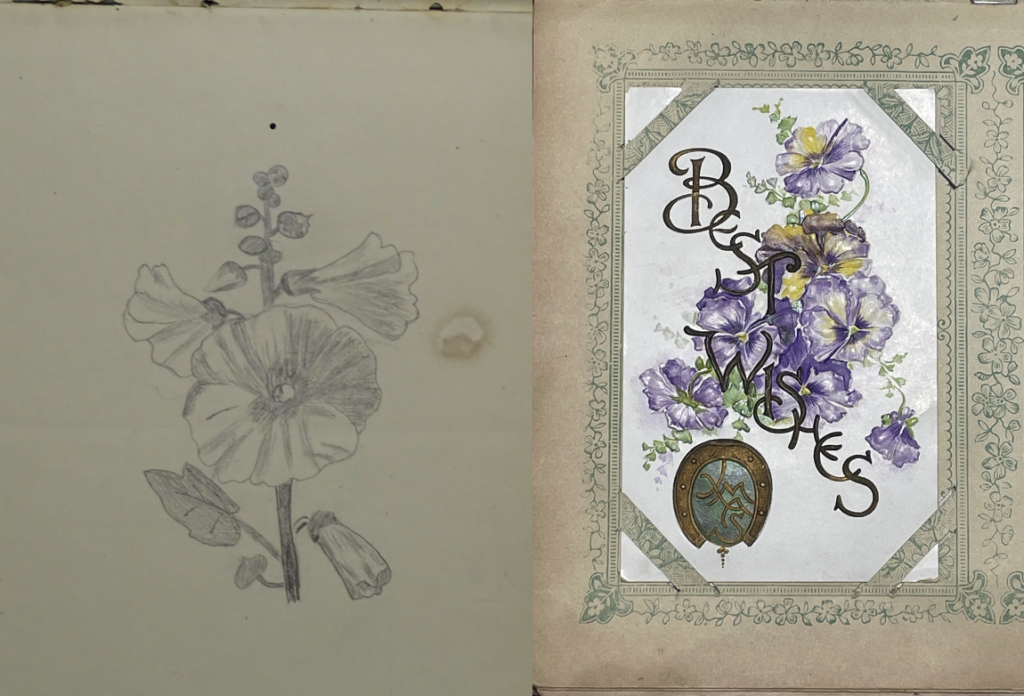
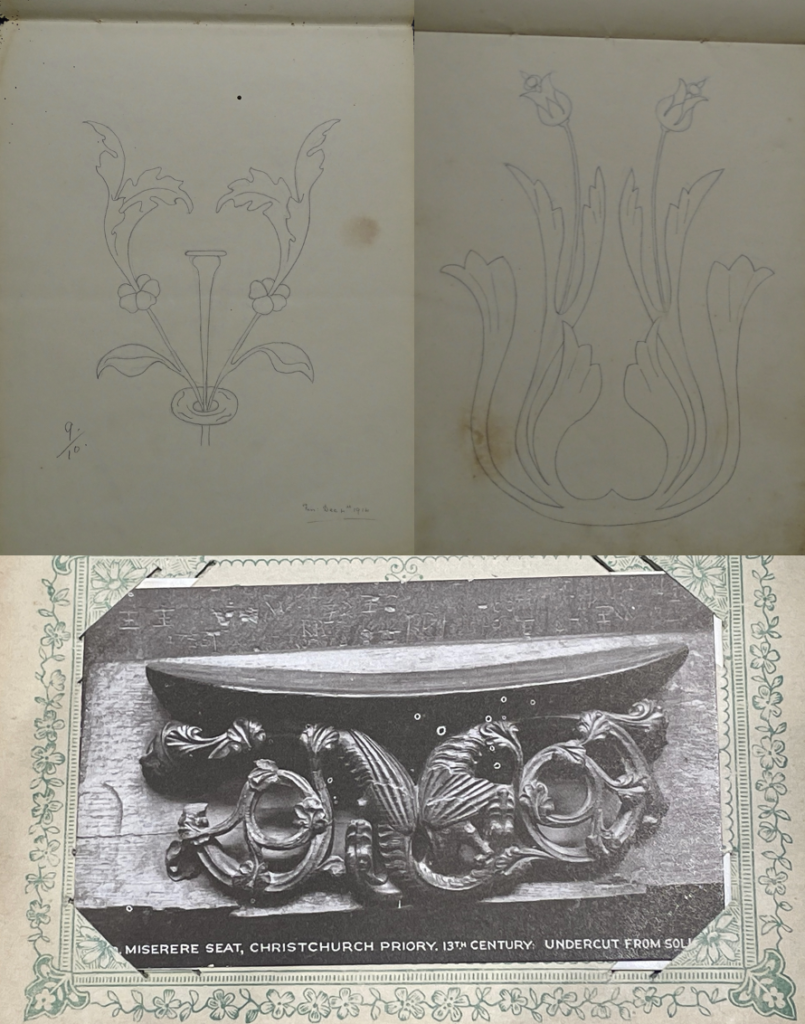
Their artistic abilities culminate in the second half of the 20th century, when they begin to produce watercolour works of Royal Holloway College.
The artworks produced at this later period are not, however, signed. Although it is possible they were produced by Phyllis, giving her great artistic skills demonstrated from an early age, Margery’s commitment to advancing her artistic abilities cannot be disregarded.
The artworks, alongside many items of the Dallen collection, arrived at the Egham Museum in 1981 following Margery’s death. It is then unclear if she had painted these last works herself, or if they had belonged to her sister.
Whether they were painted by Phyllis or Margery, or by both sisters in true artistic collaboration, they reveal artistic maturity which was possible due to the many years sketching from real-life shapes.
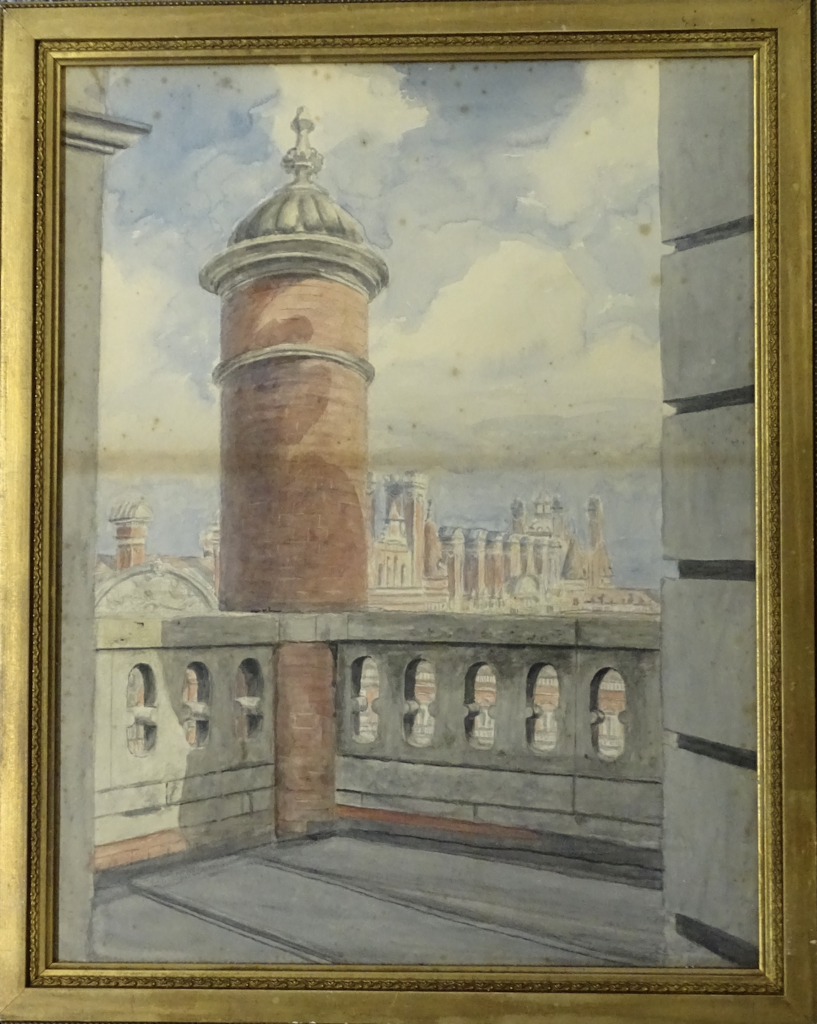
Credit: Egham Museum PR90
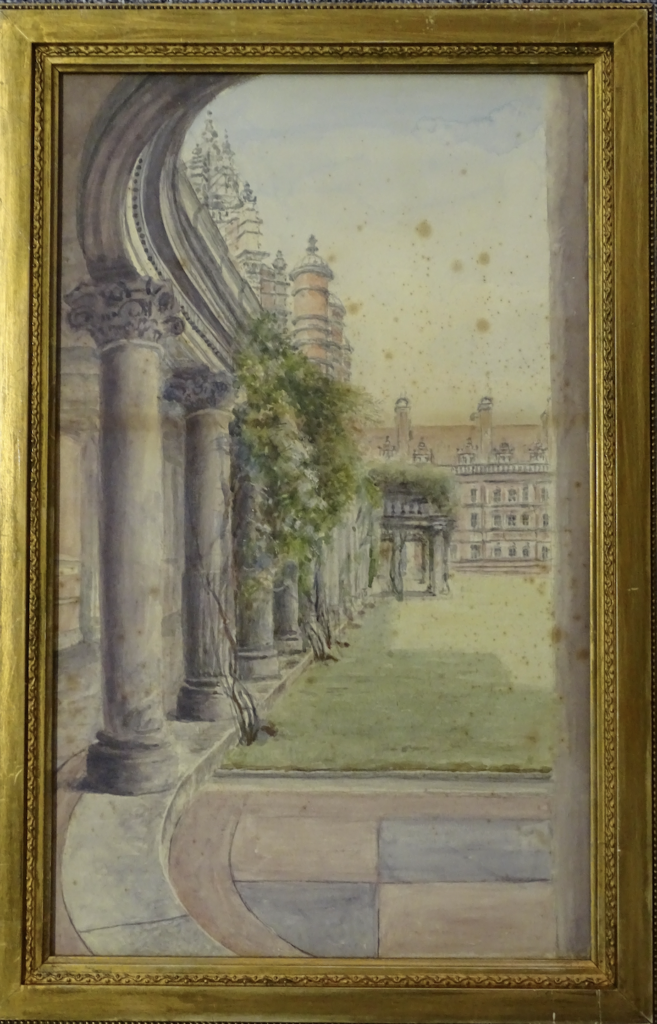
Credit: Egham Museum PR91
The detailed depictions of forms and shapes in the sketchbooks are here transformed into works of art that convey the magnitude of the Founder’s Building at Royal Holloway.
Although neither of the sisters attended classes at the College, they witnessed the development of Royal Holloway in its initial decades. As a historical, cultural, and social landmark, the College left a mark in the community, including the Dallen family.
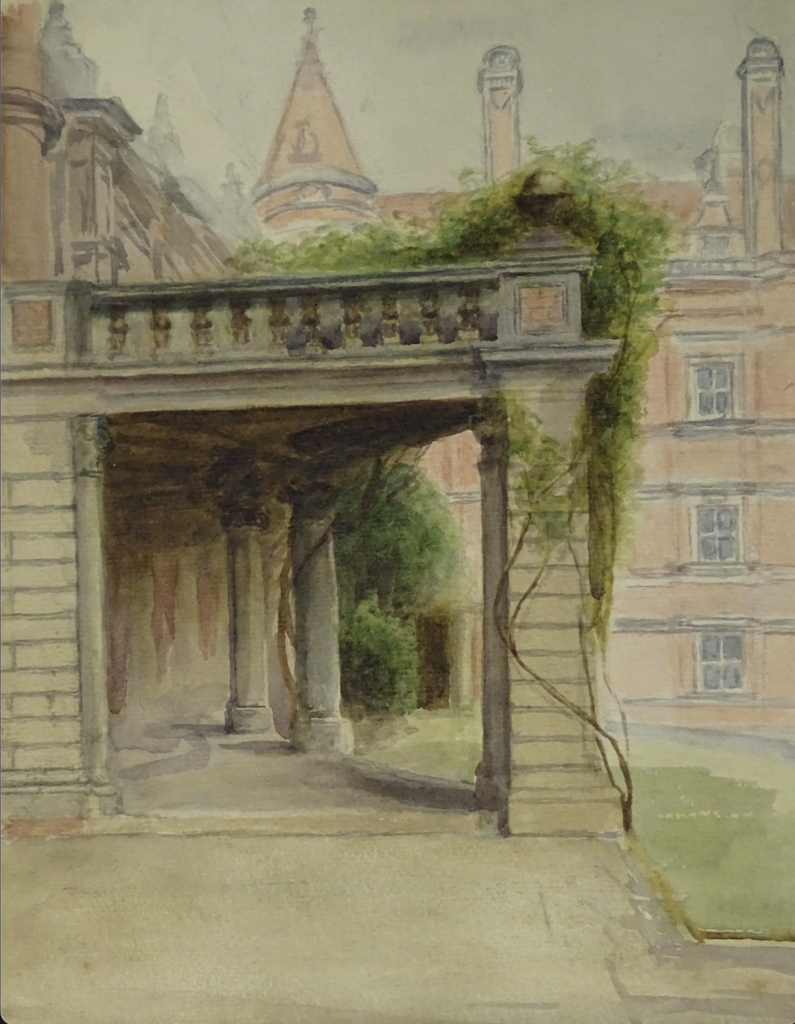
Credit: Egham Museum PR218
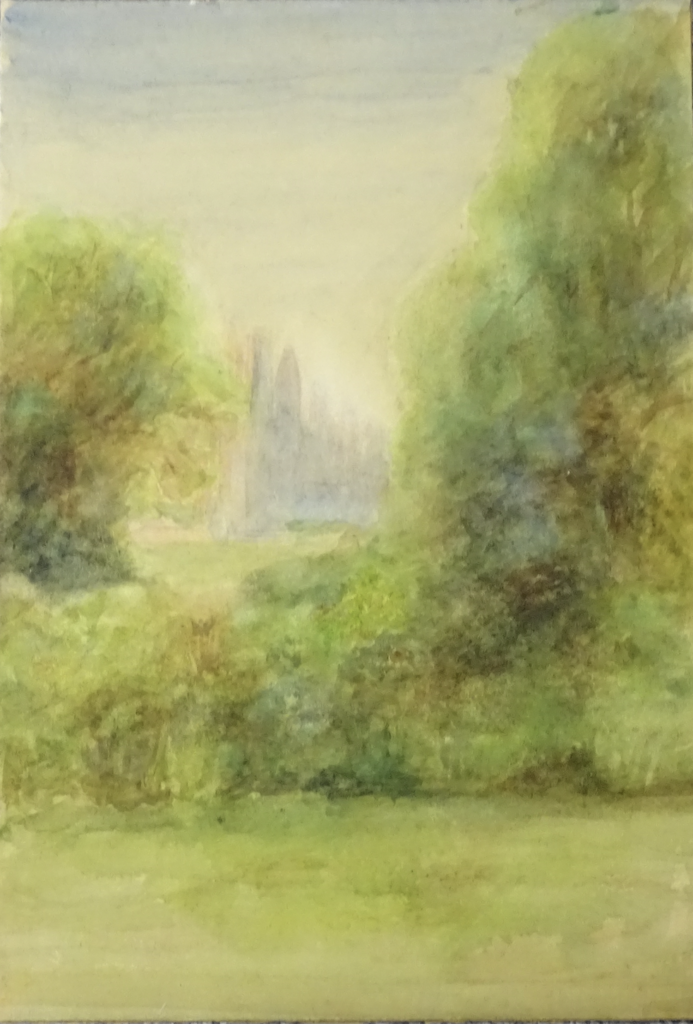
Credit: Egham Museum PR218
The density of the flora surrounding the Founder’s building in the above watercolour shows that their aptitude was not only for painting buildings. In fact, local landscapes became one of the most painted scenes at this later stage.
From local objects and cottages to majestic buildings and landscapes, our journey through Phyllis’ and Margery’s artworks parallels the dynamism of the local area from the Edwardian period to today.
Read Part 3 here.
Further reading
Caroline Bingham, The History of Royal Holloway College 1886-1986 (London: Constable, 1987)
Mary Cowling, Paintings from the Reign of Victoria: The Royal Holloway Collection (USA: Art Services International, 2008)

